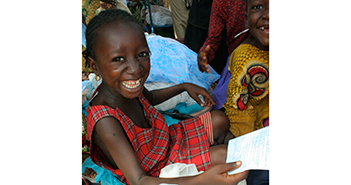New Report Provides Recommendations for Modern Communities of Practice
 Technology and online social networks have fundamentally altered the landscape of public health delivery, advocacy and practice. Barriers such as distance and coordination no longer hamper the ability to communicate and share strategies for improving the dissemination of public health knowledge.
Technology and online social networks have fundamentally altered the landscape of public health delivery, advocacy and practice. Barriers such as distance and coordination no longer hamper the ability to communicate and share strategies for improving the dissemination of public health knowledge.
Simply put: the web offers great potential for collaboration and cooperation among public health practitioners.
A new report from the Health Communication Capacity Collaborative (HC3) – Modern Communities of Practice: Recommendations for Building, Maintaining, and Measuring Impact – describes best practices for harnessing such collaborative spaces while also leveraging face-to-face interaction.
Relying on peer-reviewed and grey literature, as well as expert opinion, the report outlines approaches and best practices for fostering and strengthening three stages of community development: building, maintaining, and measuring—both in the virtual and face-to-face realms.
A community, in this context, is understood as a group of professionals with common vested interests. To build a successful community of practice (CoP), the report recommends beginning with thoughtful research of your proposed membership and communication strategy. Community builders must first identify exactly who their members are and what the best methods of reaching them may be. If a CoP already exists, don’t duplicate it. Redundant communities only contribute to fragmentation of public health messages. A more cohesive and engaged community will develop if you identify an underserved niche area of focus.
A clear objective and a value proposition provide the backbone upon which the community can grow. Reaching out and enticing new members is key. While a community may interact primarily online, face-to-face interaction, particularly in the beginning stages, is important to keep members engaged. A kickoff event for the community will energize members and solidify commitment. Readily available online services like Skype and FaceTime help personalize online interaction between members. Social media platforms like Twitter can also enhance engagement and give the community more personality. Be sure to properly test the community’s virtual platform prior to the kickoff to avoid making a bad first impression, which could sink the community’s prospects before it’s even started.
Maintaining a community over the course of its life cycle is crucial. The report recommends staying flexible and open to refining objectives and goals as the community grows. Frequent, though unobtrusive, engagement through emails or electronic newsletters can also improve engagement. While various member voices can help shape a community, a community manager is required to harness their input and lead the CoP in the right direction. Managers can take advantage of dynamic interaction with members, whether in the form of emails and text or, even better, multimedia and popular social media such as Pinterest. Stimulating dialogue through virtual events like webinars, discussion forums, and the occasional in-real-life (IRL) event can be beneficial in maintaining an active community.
Finally, the report recommends measuring the impact of a community to show how effective it is at reaching its goals. A monitoring and evaluation plan based on a conceptual framework defining desired inputs, outputs and outcomes should be created in the early stages of planning. To help measure outcomes, take advantage of online resources like Google Analytics to identify not only page views, but also frequency and duration of page views. But also assess less tangible outcomes, such as satisfaction and learning, to determine if your CoP is having an impact.
Otherwise, what’s the point?
Technology and social media are powerful mediums for the public health community to engage and interact and grow, but leveraging them effectively takes thought and care. Also remember that face-to-face interaction is absolutely integral to the growth of a community of practice.
We encourage you to take into consideration the recommendations from this report if you are planning to build and grow a CoP.








Leave a Reply
Want to join the discussion?Feel free to contribute!